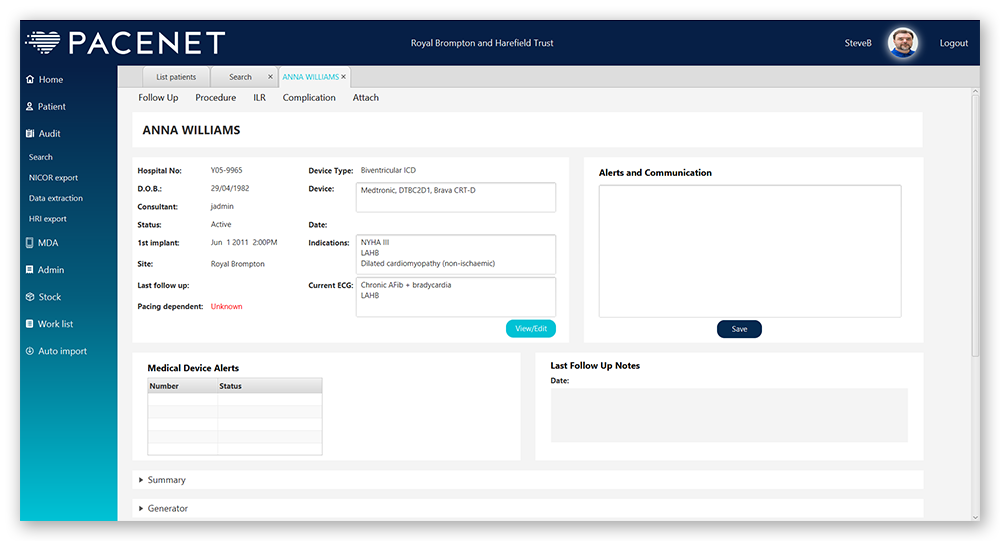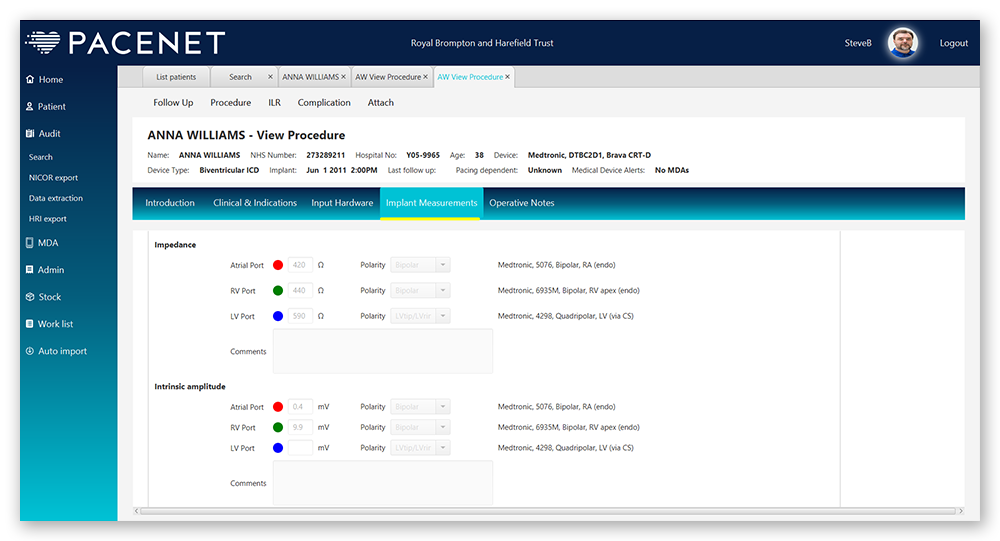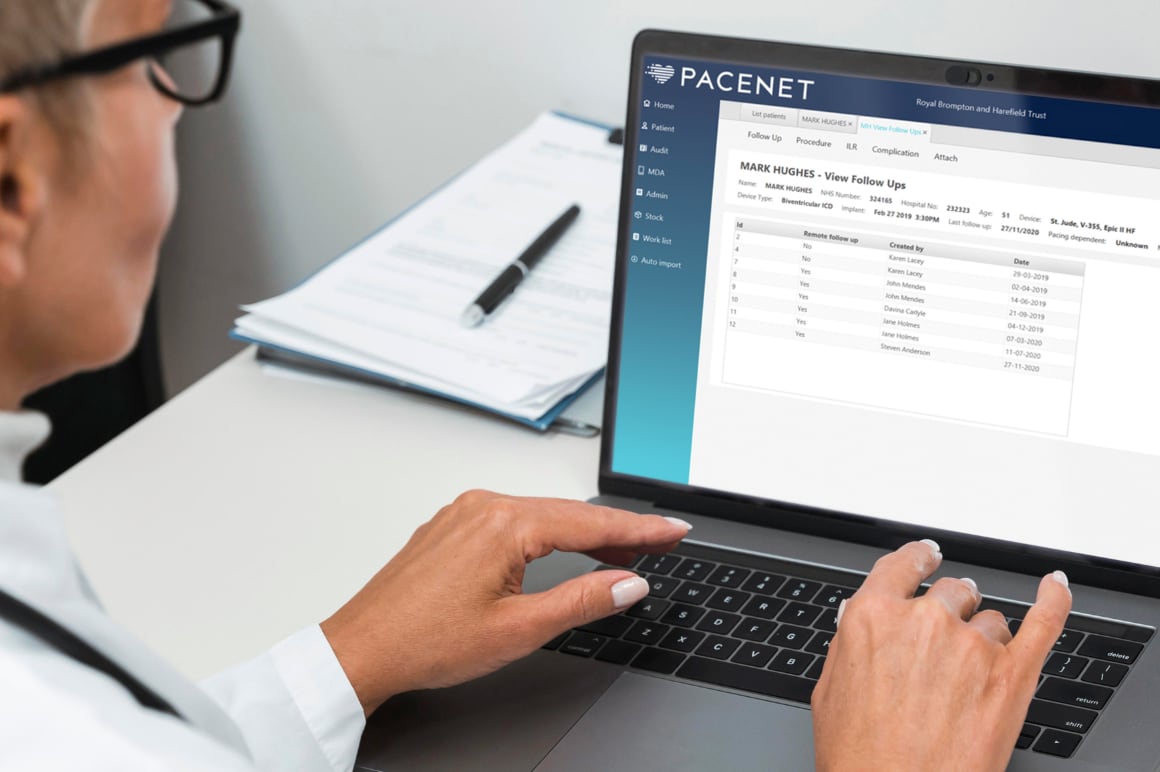Risk Reduction
PACENET reduces risk at every stage by supporting automatic and total data capture, availability of data to all clinical teams at all times, providing tools dedicated to MDA management, automatically completing mandatory registry submissions, and being designed specifically to allow the complex data searching across domains (clinical – procedural – hardware – follow up – administrative) which facilitates effective governance, rapid and meaningful audit, and research.


Clinical risk mitigation
Clinical risk is present at all stages, creating a difficult governance challenge.
The PACENET database is designed specifically to minimise and mitigate the clinical risks found in this area of a hospital’s work.
“Before PACENET, we didn’t know how many patients were missed with MDAs”
Franklin Daniel-Balan, Senior Chief Cardiac Physiologist
Procedures


Implanted hardware
“Without PACENET, MDAs would be extremely difficult to search for all patients”
Franklin Daniel-Balan, Senior Chief Cardiac Physiologist

